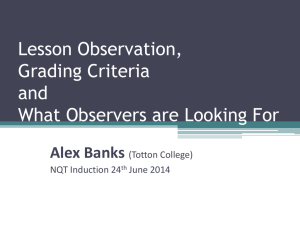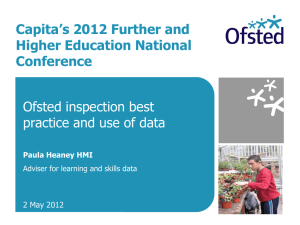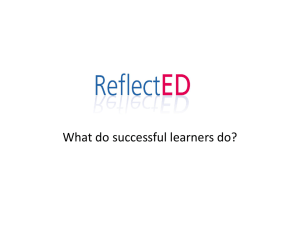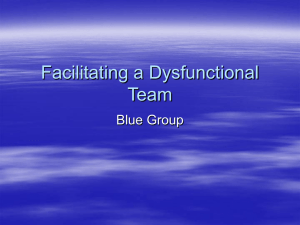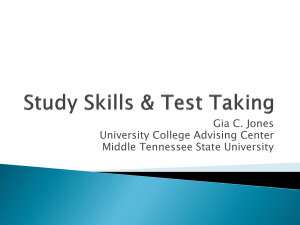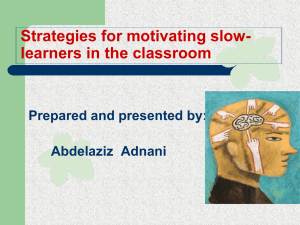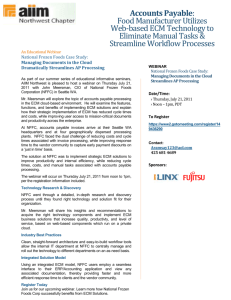Andrew Harris and Fiona Voysey
advertisement
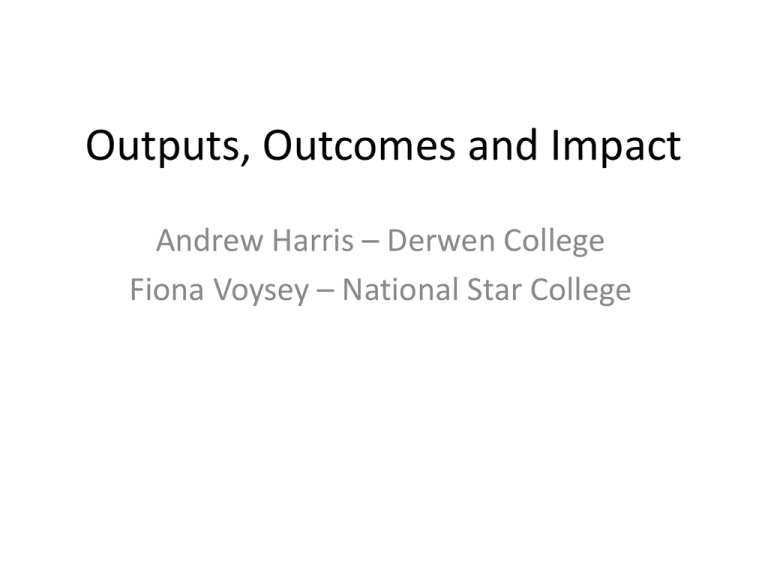
Outputs, Outcomes and Impact Andrew Harris – Derwen College Fiona Voysey – National Star College Natspec and QSR • A National ISC PRD group (National Star, RNCB, Treloars, Henshaws & Derwen) • The data would to used to benchmark across the sector, including GFE LLDD. In addition the data may be included in ILR and FfE. • For a short period the group was joined by representatives from AoC, NASS & Ofsted. Outline • To explore the concept of outcomes and how they relate to ISCs politically and in practice • To consider the current Natspec QSR project and outcomes for learners with complex needs How do you know your college is good? • Ofsted / CSCI inspection • Internal QA • The progress young people make with us But… • No national framework for outcomes • What providers value as outcomes are not always the priorities of others • Confusion and some disagreement over what we should be measuring and how Why measure outcomes? • To show the effect a placement at your college has on a young person. • To show potential placers that you provide a high quality service – But- can you meet both functions with the same set of data? The Project • The challenge: To produce quantitative data on personal/individual success that allows comparison across providers. • The Proposal: To produce annual data on the achievement of predicted Every Citizen Matters (ECM) outcomes for individual learners, identifying the numbers and percentages of learners who are ‘ahead/over’, ‘in line with/on’ or ‘behind/under’ the learning needed to meet their goal, amalgamated for the provider as a whole and against each ECM theme. The Benefits • Allows personalisation within a nationally recognised framework for consistency (RARPA plus ECM) • Measures success in outcomes which are valuable to learners and which are controlled by the provider • Supports self-assessment and evidences ‘distance travelled’/value added • Does not prescribe or constrain curriculum offer, programme or provider type, enables links to FL • Links to local authority outcomes and Ofsted inspection • Measures success in outcomes which are valued by stakeholders and commissioners Steps… • Pilots to test process, establish guidance and criteria for levels of performance • Guidance on process including what might be included under each ECM outcome, including PI’s • Guidance on how to best contextualise the data including use of evaluative criteria based upon CIF. • Parameters for small numbers of learners • Clarify definitions of complex needs and learners for whom this approach is appropriate • Validation and quality assurance (requires robust RARPA processes and self-assessment with validation through peer review and external tests through Ofsted). • Establish links to ILR Other recommendations • The use of destinations against predictions could be a useful indicator but should not be used as a measure of success as there are too many issues outside the control of the provider. • Students who die or whose health deteriorates such that continued attendance is impossible should be removed from success rates and retention data Conclusions – June 2010 • Learners individual learning goals (ILGs) and ECM outcomes? • Are your RARPA processes robust? How do you achieve this? • The concept of ‘ahead/over target’, ‘in line with/on target’, behind/under target. • Consider the use of percentages in data collection.

